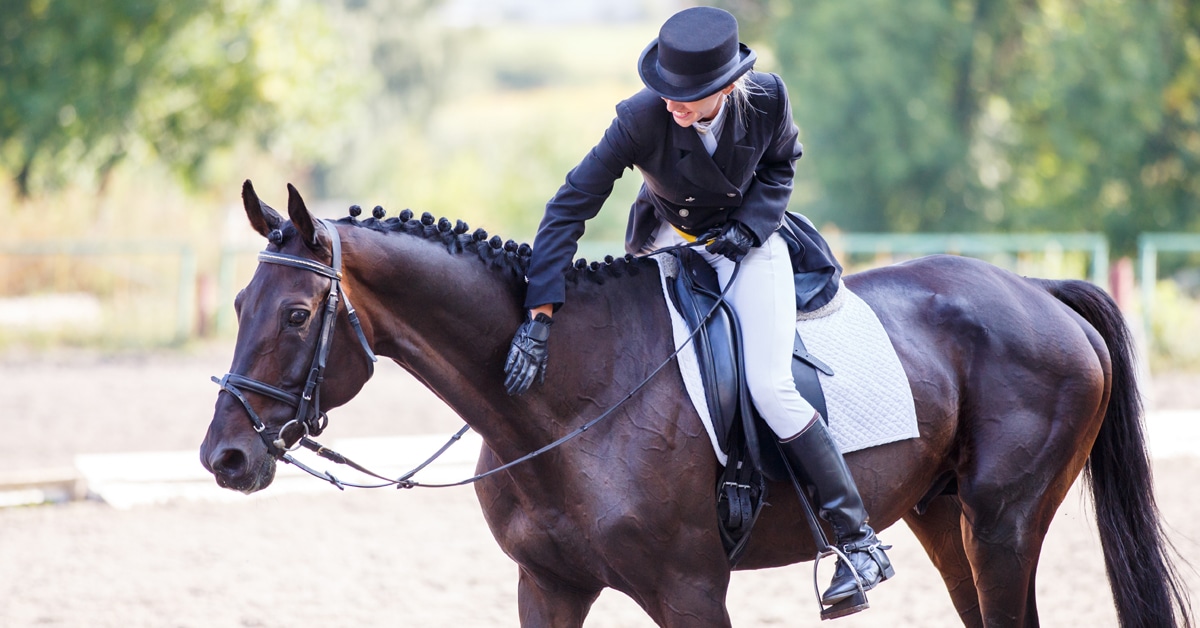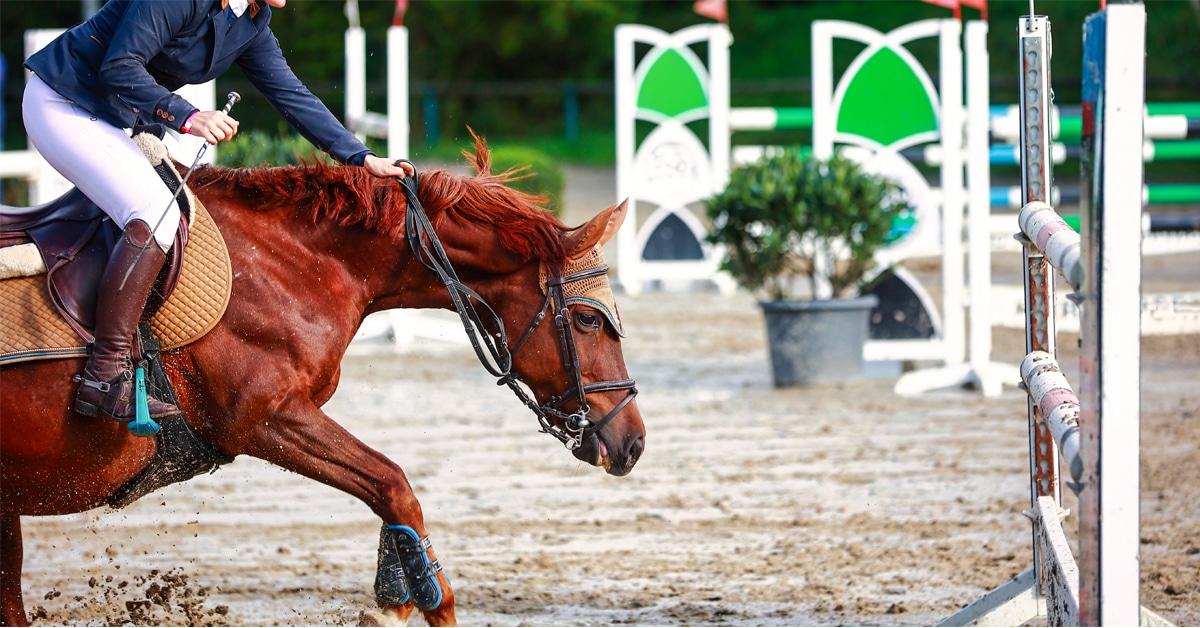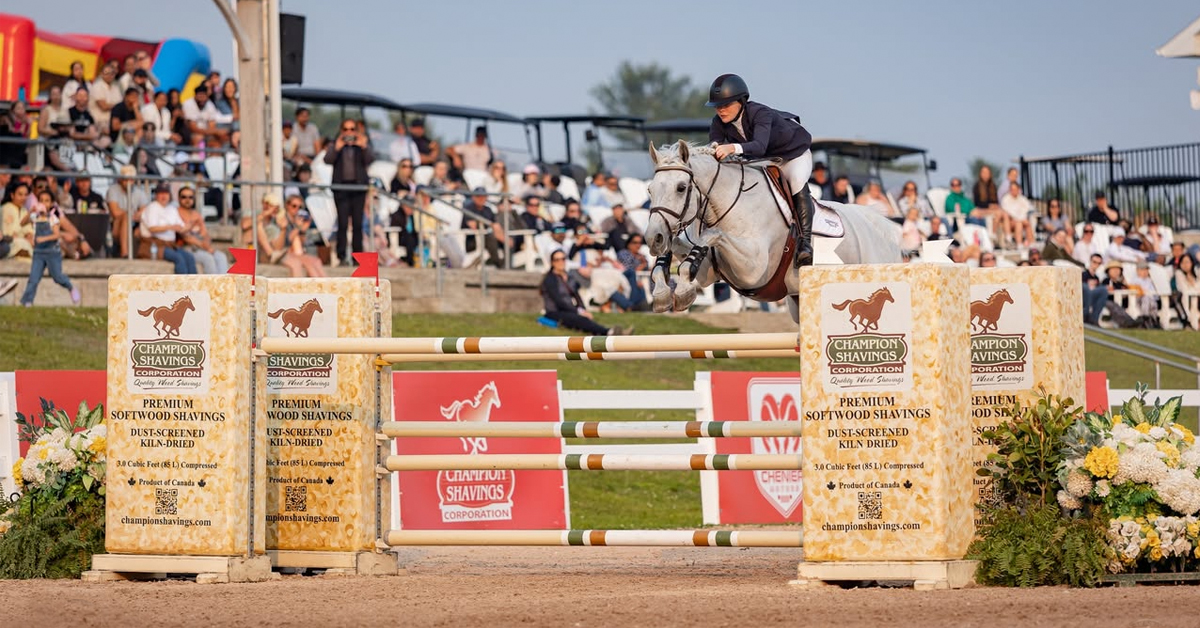From esoteric beginnings in the late 1800s, chiropractic care has evolved into a popular means of addressing musculoskeletal issues in modern horses. Though many veterinarians now support integrating chiropractic treatment into equine healthcare, its pseudoscientific origins continue to draw scepticism.
History
Daniel David Palmer, recognized as the father of chiropractic, claimed that the principles of the practice had been conveyed to him by Dr. Jim Atkinson — the ghost of a physician who’d passed away 50 years prior. In his book The Chiropractor’s Adjuster: The Science, Art and Philosophy of Chiropractic, Palmer described his belief that proper skeletal alignment was essential to physical, mental, and spiritual health. He felt it was his duty to not only restore displaced bones, but also to teach others.
Nearly 100 years after Palmer performed the first chiropractic adjustment in 1895, veterinary chiropractic was formally established by Dr. Sharon Willoughby Blake, a veterinarian and human chiropractor. Having experienced its therapeutic benefits firsthand and observed positive results in a canine patient, she sought to extend the practice to animals through the development of a training program. In 1989, she carried out her initiative by founding the American Veterinary Chiropractic Association.
Palmer’s theory of addressing various issues through the manual manipulation of vertebrae still serves as the proverbial backbone of present day veterinary chiropractic. Chiropractors use the term “vertebral subluxation complex” in reference to reduced mobility or misalignments in the spine that are believed to impede nerve flow and affect performance.
Despite its persisting popularity, countless reports of positive outcomes, and backing from veterinarians, some in the scientific community still consider equine chiropractic to be a form of quackery. Critics frequently highlight the fact that, despite more than a century of research, science has yet to conclusively validate the concept of subluxations.
This dichotomy between professional opinions shrouds a potentially promising treatment modality in uncertainty and confusion, leaving many owners with more questions than answers. In the pursuit of optimal care for issues ranging from lameness, to pain, to overall quality of life, where does the evidence actually point?
The Effects of Chiropractic Care
Anecdotally, chiropractic has a strong body of evidence supporting its therapeutic effects in both humans and horses. Skeptics, however, are quick to argue that most of those benefits lack the backing of high-quality data from controlled scientific research. Still, that is not to say numerous studies on the subject haven’t been conducted.
In a recent study, researchers measured heart rate and stride parameters in horses that received chiropractic treatment compared to a control group. While the digital monitoring equipment used to provide quantitative analysis did not pick up any significant difference between the two groups, riders told a different story. Unaware of which horses were in the treatment group, more riders reported perceived performance enhancement for those treated with chiropractic care.
Other research points to potential benefits in pain relief, flexibility, and reduced muscle tension — though a direct cause-and-effect relationship has yet to be conclusively established. One study, for instance, found that chiropractic treatment reduced pain responses, while another study on horses with sudden-onset back pain indicated that chiropractic manipulation may have been ineffective and even slightly aggravated symptoms.
Nevertheless, chiropractic’s hands-on methods can potentially serve as a valuable complement to conventional veterinary treatments. Some vets believe these techniques provide additional diagnostic and therapeutic benefits that conventional veterinary medicine alone cannot offer.
Chiropractic Treatment for Lameness
According to the American Veterinary Chiropractic Association, indications that a horse might require an appointment with a chiropractor include lameness, signs of navicular disease or laminitis, and chronic health problems that do not resolve as expected. However, current research substantiating the utilization of chiropractic treatment for lameness is limited, as no objective evaluations of lameness have been observed in clinical trials to have improved with chiropractic treatment.
Given the meagre conservative care options available for a common, often frustrating issue among horse owners, a 2022 study sought to evaluate chiropractic’s effects on chronic lameness and back pain.
Researchers split 38 horses experiencing either multi-limb or isolated hind limb lameness into treatment and control groups. Horses in the treatment category received four chiropractic sessions over a three-week period, with lameness scores assessed by a blinded clinician throughout the trial.

The study (above) used polo ponies and Quarter Horses; baited stretches were used to assess range of motion and fluidity of bending before and after chiropractic treatment, and in a control group. Overall, there were positive treatment effects based on subjective assessment of lameness, but no significant differences in active range of motion.
Although positive effects were noted in subjective assessments of lameness, the impact on objective lameness scores remained limited or inconsistent. While chiropractic treatment didn’t significantly affect objective lameness scores, it may have helped alleviate pain and gait abnormalities associated with compensatory lameness mechanisms. For that precise reason, some veterinarians employ chiropractic techniques in the diagnostic process to help pinpoint the true source of lameness.
The study’s findings additionally highlighted the need for more comprehensive research in order to accurately identify the specific type and severity of lameness potentially amenable to chiropractic care.
Evaluating the Evidence
Broader evidence has underscored further challenges in drawing conclusions due to discrepancies in study quality and a lack of standardized methods. A 2021 systematic review of veterinary chiropractic techniques evaluated peer-reviewed articles published between 1980 and 2020, ultimately identifying 13 equine studies and one canine study that fit the criteria for analysis.
From the available data, researchers extrapolated “low-to-moderate quality evidence” that various types of joint mobilization or manipulation could reduce pain and stiffness. Notable inconsistencies in study quality, techniques used, treatment duration, and the parameters considered in each study’s conclusions hindered further analysis. For more definitive results, future studies would require standardized testing methods, control groups, and longer-term follow up.
The marked absence of standardization could stem in part from the disparate nature of chiropractic care. With a myriad of variable techniques adapted from human practice and a wide range of underlying philosophies, practitioners are able to tailor their treatment based on personal experience, training, diagnostic impressions, and preferences — making uniformity challenging to achieve.
Balancing Science and Subjectivity
For some, the vast array of available methods and individualized care provided by each chiropractor are seen as assets. “There are so many different techniques because there are so many different ways people’s bodies respond,” Dr. Renee Tucker, DVM explained, addressing reasons chiropractic might not always be effective on an episode of the ‘Horse Mysteries Solved!’ podcast. “So if you do have a chiropractor and it’s not working either for you or for your horse, I do recommend maybe trying another one,” she suggested.
Conversely, proponents of evidence-based medicine argue that copious degrees of variability tarnish the practice’s legitimacy and leave owners unsure of what exactly they’ll be paying for. “When you call an equine chiropractor, the only thing that you know for sure is that you’re going to get someone. Which, in my opinion, isn’t good enough,” Dr. David Ramey, DVM maintained in a piece detailing why he wouldn’t recommend chiropractic care for horses.
Though many definitive answers have yet to be uncovered, rider satisfaction and anecdotal results keep equine chiropractic relevant as a promising adjunctive to conventional treatment. According to the Canadian Veterinary Medical Association’s position on complementary and alternative medicine, such treatments should be administered by a veterinarian or under veterinary supervision within the context of a veterinary-client-patient relationship.
Furthermore, chiropractic care is not recommended for cases involving fractures, active inflammation, infectious conditions, or neurological issues without thorough evaluation and risk assessment beforehand.
When in doubt, owners should expect their veterinarians to openly provide clear, evidence-based information and rely on proven methods to address the primary cause of any ailment. In a legitimate veterinary-client-patient relationship, it is important for owners to have confidence that all treatment options, including chiropractic, are being evaluated with the horse’s best interests in mind.
(Ed note: Several Canadian veterinarians were contacted for the purposes of this article but declined to comment, without providing any specific reasons.)
The Latest









